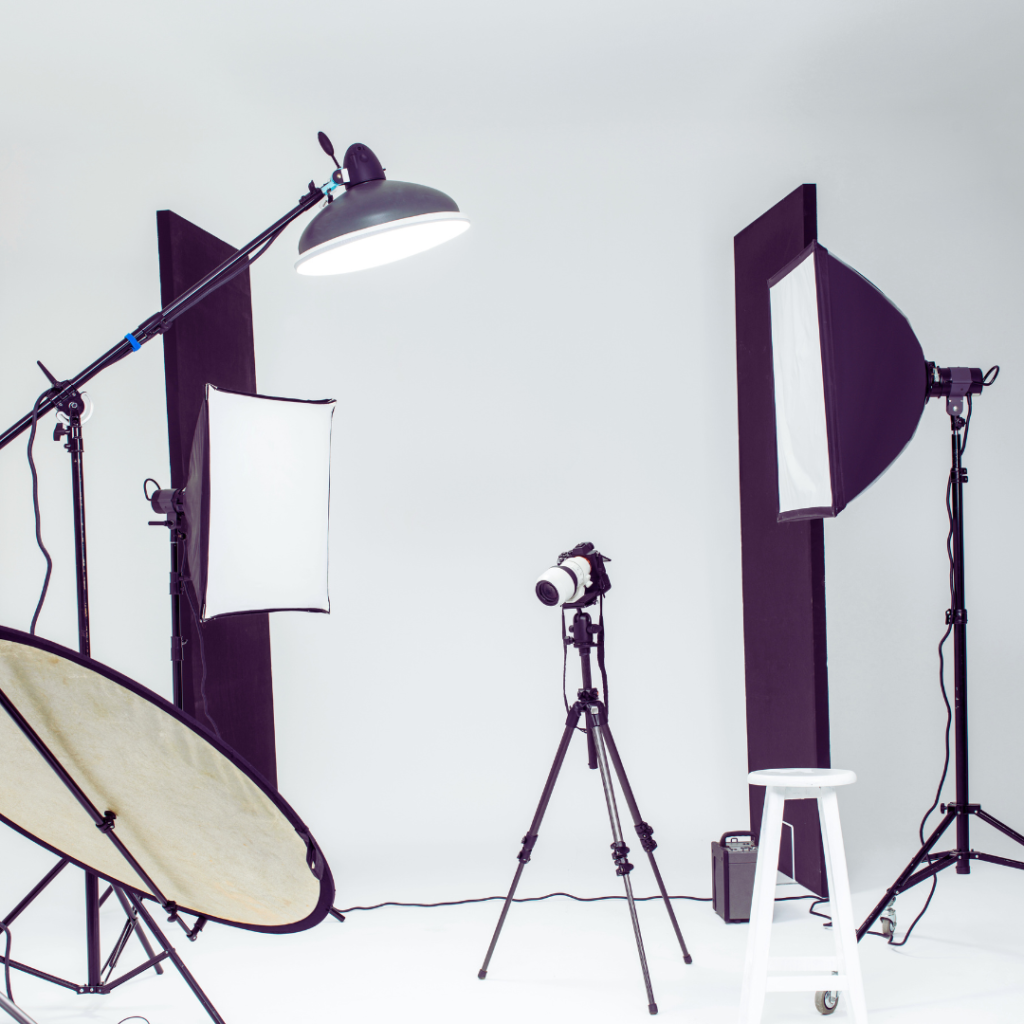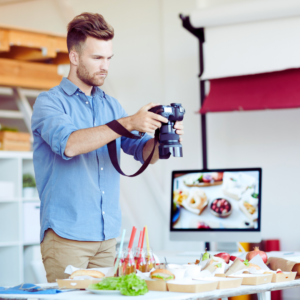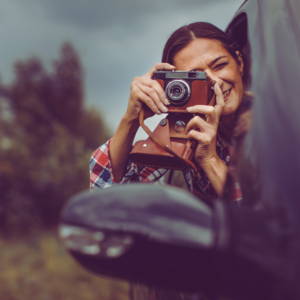For aspiring photographers, selecting the right camera gear can significantly influence their journey and creativity. Investing in a versatile camera, quality lenses, and essential accessories can elevate their skills and help them capture stunning images. The right equipment not only enhances technical capabilities but also boosts confidence in their craft.
In a market flooded with options, understanding the must-have gear can feel overwhelming. He or she should focus on gear that balances quality, price, and usability, ensuring they can explore various photography styles. Selecting the appropriate tools is crucial for anyone serious about developing their photography skills.
Whether capturing landscapes, portraits, or street scenes, using the best camera gear suited to their needs will pave the way for growth and exploration. Starting with a solid foundation enables aspiring photographers to express their unique vision and transform their passion into a rewarding pursuit.
Choosing Your First Camera
Selecting the right camera is crucial for aspiring photographers. It can significantly impact their learning experience and creative journey. By understanding the different types of cameras and their features, beginners can make a more informed decision.
Understanding Camera Types
Aspiring photographers typically encounter four main types of cameras: DSLR, mirrorless, compact, and point-and-shoot.
- DSLR cameras have a long-standing reputation for quality. They use a mirror system to reflect light and allow for interchangeable lenses.
- Mirrorless cameras are becoming increasingly popular due to their lighter design and advanced technology. They lack the mirror mechanism, offering faster shooting speeds and often superior autofocus systems.
- Compact cameras provide convenience. These small devices are typically easy to use, making them suitable for casual photography.
- Point-and-shoot cameras have automatic settings, ideal for those who prefer not to manage manual controls.
DSLR vs Mirrorless Cameras
When comparing DSLR and mirrorless cameras, several factors come into play.
DSLR cameras, such as the Canon EOS 250D, feature a robust autofocus system and an optical viewfinder. They generally excel in battery life and the availability of a wide range of lenses.
Conversely, mirrorless cameras like the Sony A6400 and Nikon Z50 often offer superior video capabilities and live-view functionality.
For beginners, both types have entry-level options, including the Canon EOS R10 and Nikon Z30, providing an excellent balance of performance and price.
Key Features to Consider
When choosing a camera, certain features are particularly beneficial for beginners.
- Megapixels: Look for a minimum of 24.1 MP for decent image quality.
- Sensor type: APS-C sensors, common in many entry-level DSLRs and mirrorless cameras, strike a balance between size and quality, while crop sensor cameras tend to be more affordable.
- Autofocus system: A robust autofocus system, like the Dual Pixel CMOS AF in some Canon cameras, makes it easier to capture sharp images, particularly for moving subjects.
For those seeking beginner-friendly cameras, options like the Olympus OM-D E-M10 Mark IV and Sony ZV-E10 cater to varying skill levels and budgets, offering simplified controls without sacrificing quality.
Lens Selection Guide
Selecting the right lens is crucial for any aspiring photographer. The choice between prime and zoom lenses, understanding focal lengths, and knowing which lenses to prioritize can greatly enhance their photographic journey.
Prime vs Zoom Lenses
Prime lenses have a fixed focal length, offering typically better image quality, wider maximum apertures, and excellent low-light performance. For instance, a 50mm f/1.8 lens allows for a shallow depth of field, making it ideal for portrait photography. This lens is lightweight and affordable, making it a favorite among beginners.
In contrast, zoom lenses offer versatility with variable focal lengths. A lens like the Nikon Nikkor Z 24-50mm is perfect for various shooting scenarios, from landscapes to portraits. While they may not perform as well in low light compared to primes, their convenience for capturing different types of shots without changing lenses often outweighs this downside.
Understanding Focal Length and Aperture
Focal length influences composition and perspective. Shorter focal lengths (e.g., 24mm) are great for expansive landscapes, while longer focal lengths (e.g., 200mm) excel in wildlife photography. Each lens allows photographers to understand how distance affects their images.
Maximum aperture is another critical factor. A larger aperture (e.g., f/1.4) enables more light to enter the lens, aiding in low-light situations and providing a shallower depth of field which isolates subjects beautifully. When choosing a lens, photographers should balance the desired aperture with the effective focal range, particularly if using a crop sensor camera, where lenses behave differently.
Must-Have Lenses for Beginners
For beginners, having essential lenses can make a significant difference in their skills and creativity. A reliable 50mm f/1.8 lens is a must; its versatility in various lighting conditions and sharpness make it excellent for all types of photography.
A versatile zoom lens such as the Nikon Nikkor Z 24-50mm fits various shooting needs, simplifying the transition from one subject to another. Additionally, a wide-angle lens (e.g., 16-35mm) can help explore landscapes and interiors. Each of these lenses contributes unique capabilities that can aid any aspiring photographer in building a solid foundation.
Essential Photography Accessories
For aspiring photographers, having the right accessories enhances their shooting experience and improves image quality. Key items to consider include tripods for stability, protective gear, filters for creative effects, and reliable memory solutions.
Stabilizing Your Shot with Tripods
A sturdy tripod is essential for anyone looking to capture sharp images, especially in low-light conditions or when using slow shutter speeds. Tripods come in various styles, including lightweight travel models and heavier options for studio work.
Key features to look for include adjustable height, ease of setup, and stability. For those using entry-level cameras like the Canon Rebel SL3 or Nikon D3500, a tripod that supports at least 5-10 pounds is sufficient. Brands like Manfrotto and Gitzo offer reliable options that cater to different budgets.
Protective Gear and Cleaning Kits
Protective gear is crucial for maintaining photography equipment in optimal condition. A quality camera bag or sling bag provides protection and easy transport for gear. Look for bags with padding, weather resistance, and customizable compartments.
Cleaning kits are equally important for keeping lenses free of dust and fingerprints. A typical kit should include a microfiber cloth, lens cleaning solution, and a blower to remove debris. Regular maintenance prevents scratches and ensures image quality remains high, essential for capturing standout shots.
Enhancing Images with Filters
Filters can dramatically alter photographers’ creativity and control over their images. Common types include polarizers, UV filters, and neutral density (ND) filters.
Polarizing filters reduce glare and reflections, enhancing colors in outdoor scenes. UV filters protect the lens from scratches and dust while allowing the camera to capture images naturally. ND filters are particularly useful for achieving motion blur in bright conditions by reducing light entering the lens. Investing in high-quality filters from brands like B+W or Hoya is advisable to avoid compromising image quality.
Memory and Power Solutions
Reliable memory and power solutions are vital for uninterrupted shooting. SD cards are the most common choice, and aspiring photographers should prioritize cards with high write speeds, especially when shooting in RAW format.
Having extra batteries ensures that a photographer is never left without power during crucial moments. Chargers should be compatible with the camera’s battery type, making it easy to recharge on the go. Brands like SanDisk and Lexar provide dependable memory solutions that cater to various capacities, ensuring ample storage for photography projects.
Post-processing and Content Creation
Post-processing plays a crucial role in enhancing photographs and videos, helping photographers express their creativity. Understanding software options and content creation techniques elevates their work in today’s digital landscape.
Basic Photo Editing Techniques
Aspiring photographers should familiarize themselves with fundamental photo editing techniques to refine their images. Key actions include adjusting exposure, contrast, saturation, and sharpness.
Using tools like the crop feature can improve composition, while color correction adjusts the look to match the photographer’s vision.
For instance, working with RAW files offers greater flexibility in adjustments.
Editing software, like Adobe Lightroom and Adobe Photoshop, provide intuitive interfaces for these tasks.
These programs allow easy layering, masking, and retouching, ensuring that every photo meets high-quality standards.
Practicing these techniques consistently aids in building a strong foundation for future projects.
Software for Aspiring Photographers
When selecting software, aspiring photographers have various options to enhance their workflow. Popular choices include Adobe Lightroom for its comprehensive photo management and editing capabilities.
Adobe Photoshop excels in detailed retouching and advanced edits.
For those seeking free alternatives, software like GIMP or Darktable can be considered.
Many compact cameras, such as the Nikon Z fc and Fujifilm X-T5, integrate well with these tools, allowing for seamless import and editing.
Creativity can also extend to video editing, especially with cameras like the Sony ZV-1 II or Sony ZV-1 Mark II, which support 4K video recording and content creation.
Dedicated applications designed for specific editing needs can further enhance the process.
Engaging in Video and Vlogging
Vlogging has become an integral part of modern content creation, and aspiring photographers should explore this avenue. Choosing the right equipment is vital for capturing high-quality footage.
Cameras like the Sony ZV-1 Mark II are tailored for vlogging, offering features such as a flip screen and excellent autofocus.
Lighting is crucial for video quality; using softboxes or ring lights can improve production values significantly.
Editing video requires software as well. Programs like Adobe Premiere Pro facilitate smooth transitions, sound editing, and color grading.
By honing these skills, photographers can build a strong online presence, sharing their photography journey more effectively.





